|
Northern Convoys (2)

Mr David Wright
In the year 2005, we expect instant news – reports of events in real time. This is especially true for reports of wars and terrorist or other disasters. There often seem to be more TV crews at the scene than there are soldiers or police, all falling over each other to be the first to bring the news to our radios and screens.
At the time, few of us knew about these convoys. Ships would be loaded in complete secrecy at British docks: London, Bristol, Liverpool, the Clyde, etc, and mothers, sisters and wives would watch them slide silently out to sea — often neither ships nor crews ever being seen again.
A British naval history summarises the campaigns as follows:
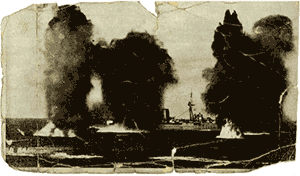 The invasion of Russia soon led to the introduction of the Russian or Arctic convoys with their dreadful conditions and, after some months have elapsed, high losses in men and ships. However, the Royal Navy’s presence in the Arctic was first made known in August when submarines started operating with success against the German shipping supporting the Axis attack from Norway towards Murmansk. The port was never captured.
The invasion of Russia soon led to the introduction of the Russian or Arctic convoys with their dreadful conditions and, after some months have elapsed, high losses in men and ships. However, the Royal Navy’s presence in the Arctic was first made known in August when submarines started operating with success against the German shipping supporting the Axis attack from Norway towards Murmansk. The port was never captured.
Conditions for these convoys were at the very least difficult. Both summer and winter routes were close to good German bases in Norway from which U-boats, aircraft and surface ships operated. In the long winter months there is terrible weather and intense cold, and in summer, continual daylight. Many people considered that no ships at all would get through.
The first convoy sailed in August and, by the end of the year, over 100 merchantmen1 had set out in both directions. Only one was lost to a U-boat. In 1942 the picture changed considerably. All convoys were temporarily halted and the Home Fleet stripped bare to provide all possible ships for the invasion of North Africa.
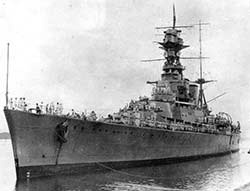 After a three-month gap, the first of the JW convoys set out in December 1942. JW51 sailed in two sections. The first part, JW51A, left Loch Ewe, Scotland, on the 15th with 16 ships bound for Kola Inlet. All arrived safely on Christmas Day2 accompanied the by supporting cruisers “HMS Jamaica” and “HMS Sheffield”3. The following detailed account may give some idea of the fighting needed to keep these supply routes open.
After a three-month gap, the first of the JW convoys set out in December 1942. JW51 sailed in two sections. The first part, JW51A, left Loch Ewe, Scotland, on the 15th with 16 ships bound for Kola Inlet. All arrived safely on Christmas Day2 accompanied the by supporting cruisers “HMS Jamaica” and “HMS Sheffield”3. The following detailed account may give some idea of the fighting needed to keep these supply routes open.
JW51B (14 ships) lefts on the 22nd escorted by six destroyers, a minesweeper and four smaller vessels under the command of Capt. Sherbrooke in “HMS Onslow”. Admiral Burnett with “HMS Jamaica” and “HMS Sheffield” joined the convoy south west of Bear Island to provide close cover through the Barents Sea. By now the German “Tirpitz”, pocket battleship “Lutzow”, heavy cruiser “Admiral Hipper”, light cruisers “Koln” and “Nurnberg” and a number of destroyers were in Norwegian waters. The Admiralty assumed they were for attacks on Russian convoys. In fact, they were in Norway because Hitler feared invasion. “Hipper”, “Lutzow” and six destroyers put to sea from Altenfiord to intercept north of North Cape. Early on New Year’s Eve, the British ships were in four groups. The main convoy with the five remaining destroyers “Achates”, “Onslow”, “Obdurate”, “Obedient” and “Orwell” headed due east. (Some of the escort and merchantmen had been scattered by gales and never regained the convoy). Northeast of the convoy, detached minesweeper “Bramble” was searching for missing ships. Adm. Burnett’s two cruisers covered to the north. Further north still a straggling merchant ship and escorting trawler tried to reach the convoy. Capt. Sherbrooke planed to use the same tactics as Admiral Vian in the Second Battle of Sirte4 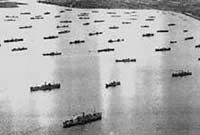 and headed for the enemy while the convoy turned away under smoke. Unfortunately, the German Admiral Kummetz divided his force in two and planed to attack from astern on both sides — “Hipper” and three destroyers in the north and “Lutzow” with the other three in the south. At around 09.30, the action started with “Hipper’s” three destroyers heading north across the rear of the convoy and opening fire on “Obdurate”. The convoy later turned as planned, but south towards “Lutzow”. Then “Onslow”, “Orwell” and “Obedient” sighted Hipper” and held her off until, at 10.20, “Onslow” was hit and Captain Sherbrooke badly wounded5. Burnett’s cruisers meanwhile, following a radar contact, diverted north towards the straggler and escort. They only headed towards the action at 10.00. Still to the north of the convoy, “Hipper” and her destroyers come across the hapless “Bramble” and sent her to the bottom around 10.40. They headed south, and 40 minutes later, the cruiser approached JW51B, opened fire and hit “Achates” which sank after the battle was over. “Lutzow” came up on the convoy from the south but did not join battle until 11.45. She was driven off by the remaining destroyers. By then, “Jamaica” and “Sheffield” had arrived on the scene. They quickly hit “Hipper” and sunk destroyer “Friedrich Eckoldt”. “Hipper” tried to get back to the convoy but again the destroyers skilfully kept her at bay. By midday the German ships were withdrawing with the two cruisers in pursuit. Contact was shortly lost. None of the merchantmen were more than lightly damaged and all 14 reached Kola on 3rd January. A return convoy left Kola on the 30th December and after being supported part of the way by “Jamaica” and “Sheffield”, those 14 merchant ships were delivered to Loch Ewe on the 11th January. and headed for the enemy while the convoy turned away under smoke. Unfortunately, the German Admiral Kummetz divided his force in two and planed to attack from astern on both sides — “Hipper” and three destroyers in the north and “Lutzow” with the other three in the south. At around 09.30, the action started with “Hipper’s” three destroyers heading north across the rear of the convoy and opening fire on “Obdurate”. The convoy later turned as planned, but south towards “Lutzow”. Then “Onslow”, “Orwell” and “Obedient” sighted Hipper” and held her off until, at 10.20, “Onslow” was hit and Captain Sherbrooke badly wounded5. Burnett’s cruisers meanwhile, following a radar contact, diverted north towards the straggler and escort. They only headed towards the action at 10.00. Still to the north of the convoy, “Hipper” and her destroyers come across the hapless “Bramble” and sent her to the bottom around 10.40. They headed south, and 40 minutes later, the cruiser approached JW51B, opened fire and hit “Achates” which sank after the battle was over. “Lutzow” came up on the convoy from the south but did not join battle until 11.45. She was driven off by the remaining destroyers. By then, “Jamaica” and “Sheffield” had arrived on the scene. They quickly hit “Hipper” and sunk destroyer “Friedrich Eckoldt”. “Hipper” tried to get back to the convoy but again the destroyers skilfully kept her at bay. By midday the German ships were withdrawing with the two cruisers in pursuit. Contact was shortly lost. None of the merchantmen were more than lightly damaged and all 14 reached Kola on 3rd January. A return convoy left Kola on the 30th December and after being supported part of the way by “Jamaica” and “Sheffield”, those 14 merchant ships were delivered to Loch Ewe on the 11th January.
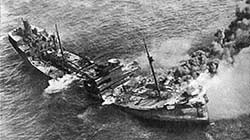 Learning his big ships have been driven off by light cruisers and destroyers, Hitler flew into a rage and ordered them all paid off. Grand-Admiral Raeder resigned in protest and was succeeded as C-in-C6, German Navy, in January by Admiral Doenitz. The paying-off order was later revoked.
Learning his big ships have been driven off by light cruisers and destroyers, Hitler flew into a rage and ordered them all paid off. Grand-Admiral Raeder resigned in protest and was succeeded as C-in-C6, German Navy, in January by Admiral Doenitz. The paying-off order was later revoked.
Now, many years after the events, some recognition is being given to those who survived. Again, I cannot do better perhaps than to quote [an English version of] Pravda of 15th May 2003:
Russian Ambassador to London to award British veterans
On Thursday the Russian Embassy to Great Britain will host a ceremony of awarding British veterans of the Northern convoys with service medals. Ambassador Grigory Karasin will hand Russian government awards, service medals issued in commemoration of the 50th anniversary of the victory in the Great Patriotic war of 1941-1945, to 39 British veterans.
“Such ceremonies are held twice a year,” the Russian Embassy reported. The Russian mission together with the British Association of War Veterans finds participants of the convoys and recommends them for awarding. The two last ceremonies of awarding Royal Armed Forces veterans took place in June and November last year. On the whole, the service medals have been awarded to over 3,000 of convoy veterans.
During the Second World War the northern convoys, comprised mainly of British servicemen, as the United Kingdom was the USSR’s ally in this war, delivered food and military equipment via the Arctic waters to Soviet northern ports.
On the whole these convoys delivered about 4 million metric tons of cargoes, which is about one fourth of western allies’ total aid. The cargoes included over 7,000 airplanes, about 5,000 tanks, cars, fuel, medicines, outfit, metals and other raw materials.
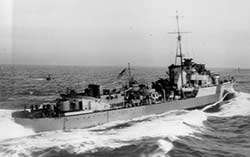 Much of the material supplied was British and American, some via the US Lend-Lease programme7. I know that the material contributed by Britain was given at great cost to ourselves, not simply in monetary terms, but because it was desperately needed for our own defence and campaigns. However, even then, many of us recognised that the hardships of the heroic Soviet peoples were far greater than our own dangers, privations and discomforts.
Much of the material supplied was British and American, some via the US Lend-Lease programme7. I know that the material contributed by Britain was given at great cost to ourselves, not simply in monetary terms, but because it was desperately needed for our own defence and campaigns. However, even then, many of us recognised that the hardships of the heroic Soviet peoples were far greater than our own dangers, privations and discomforts.
A Russian in Moscow recently commented8: “One can argue how valuable that help was. There are different points of view. Even here in Russia estimates of the value of lend-lease vary from ‘tiny’ to ‘very great’. My point of view is that we shouldn’t count only the number of planes, tanks and well-known goods. In my opinion, the most valuable were the trucks, raw materials and food.”
It is hard to judge now, but at the time, we believed that sending those convoys was the right thing to do and we did our best.
1 The ships were called ‘merchantmen’, but strangely, all ships are referred to by the feminine pronoun ‘she’. There is no logic or consistency in English!
2 Our Christmas Day is 25th December.
3 It was a later ‘HMS Sheffield’ that was destroyed by the Argentinians with great loss of life during the Falklands War.
4 This was a naval battle on 22 March 1942 between the British Royal Navy and the Italian Regia Marina fleets in the Mediterranean Sea. The action was an Italian victory, but their timidity in pressing their advantage made it a minor one.
5 Captain Rupert St. V. Sherbrooke RN was awarded the Victoria Cross for gallantry. The VC is Britain’s highest military award, usually awarded posthumously.
6 Commander-in-Chief.
7 Note: This material was not given by the Americans — it all had to be paid for.
8 I have corrected his English!
Читать еще в этой рубрике:
Читать еще в этом номере:
|
|











